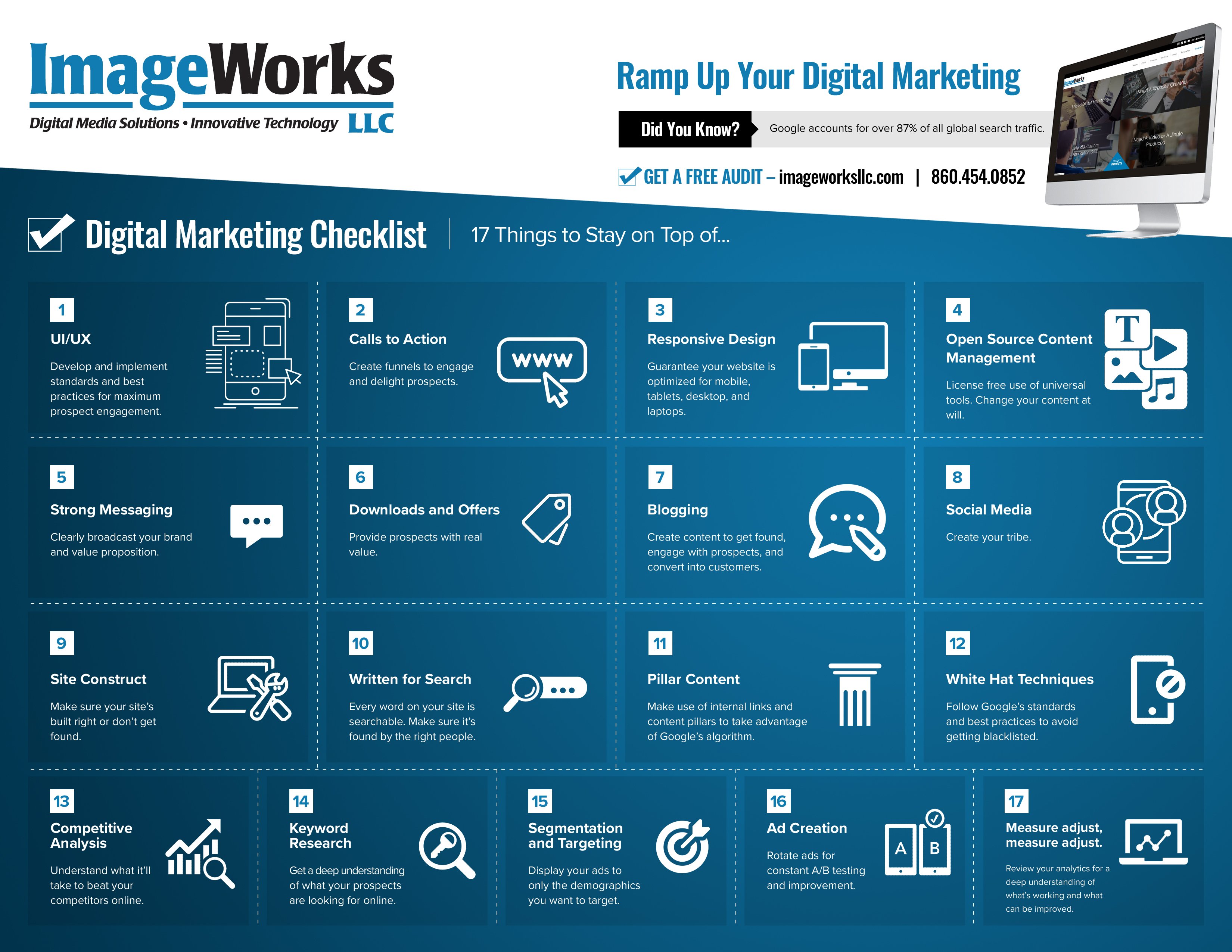
Google accounts for over 87% of all global search traffic, so it’s understandable that marketing has infiltrated the digital space. There’s so much more to branding now, and translating a clear message to your target audience is crucial if you want to gain traffic to your page. We’ve compiled a digital marketing checklist of all things necessary to help you optimize your content online.
-
UI/UX Design
These abbreviations may seem intimidating, but if you have any type of business website, then you probably already understand what they mean. UI stands for “user interface” which is the graphical layout of a page. It includes text entry fields, buttons and text users click on, basically any visual or interactive element of a page. UX stands for ‘user experience”, which is determined by how easy or difficult the user’s experience is navigating the page. They work together to create an efficient, informative and seamless experience for the user.
-
Calls to Action
A call to action encourages users to further engage on your page. It’s usually in the form of a button or hyperlink, and should be placed appropriately on your page in order for the user to access it.
-
Responsive Design
Responsive web design correlates to UI/UX in the sense that you want to guarantee your website is optimized for whatever platform your users are accessing it from. The different platforms include any mobile app, laptops, tablets or desktop that should respond to the switch in screen size or orientation. By having a responsive web design, you can ensure your users are getting complete access to the function of your page.
-
Open Source Content Management
CMS offer free use of universal web or content creation tools that allow you to manage information or content regarding your webpage all at once.
-
Strong Messaging
If you are trying to reach your target audience, or just want to do more branding to get your name out there, you want to be sure you’re sending a clear message to your users. Go over what your main objectives are and who you are trying to advertise to, so you message is consistent with your brand.
-
Downloads and Offers
Content creation isn’t just about informing your users of your brand, you want to include marketing offers that complement the products or services your business sells. You can access more information about your target audience’s interests with downloads and offers as well, by analyzing the ones they interact with the most.
-
Blogging
Blogging is a great way to convert users into customers. Posting regularly informs users you want to share your insight with them. Blogs can be a better route to explain to users in a way they can understand and engage more personally with.
-
Social Media
If you don’t know by now, social media has become a leader in digital marketing content. People want to be social on social media, so having a business page on any social media platform such as Facebook, LinkedIn, and Twitter is a great way to engage with your followers and have a more personal conversation about what your brand is all about.
-
Site Construct
Responsive Design and UI/UX ensures your site is built right for your users. You want to make sure users can access, navigate, and engage within the system of your website. Having confusing functions, messages, or links that don’t work is not going to bring people back to your site.
-
Written for Search
Written search is the best way for people to actually find your site. Make sure your message is clear in your wording so when someone is interested in a product or service you offer, they will find you when they go to search.
-
Pillar Content
Make use of internal links and content pillars to take advantage of Google’s algorithm. Content pillars are topics or themes that create the foundation for your overall content strategy.
-
White Hat Techniques
White hat techniques include using keyword analysis and link building to improve link popularity. Follow Google’s standards and best practices to avoid getting blacklisted.
-
Competitive Analysis
Competitive analysis assesses the strengths and weaknesses of your potential competitors. Understand what it’ll take to beat your competitors online with your digital marketing.
-
Keyword Search
Similar to written search, you want to be sure your users are getting your website when searching online. Get an understanding of what they are searching for and implement that into your page.
-
Segmentation and Targeting
Display your ads to the demographics in your target audience with market segmentation. This will give a better chance of your existing and potential customers in your target audience to see you.
-
Ad Creation
You can rotate your ads using A/B testing to determine which one performs better. By rotating which platform the ad is on, you can figure out if your Facebook page or your Website is getting better reach.

